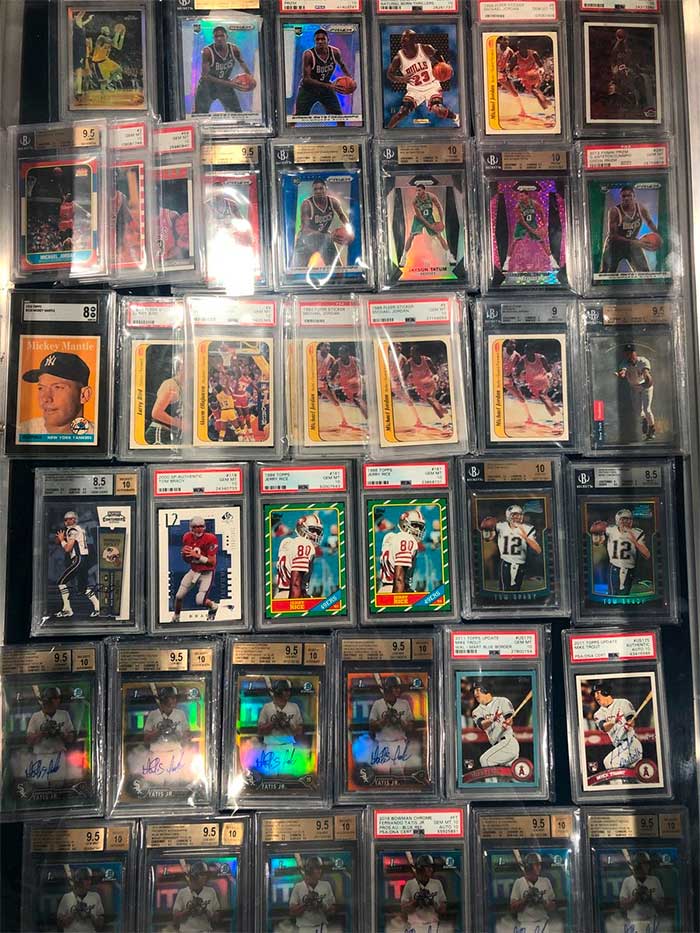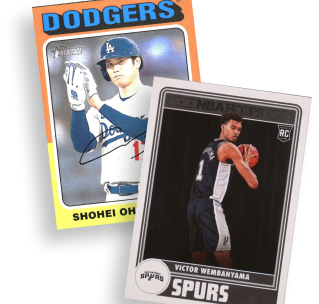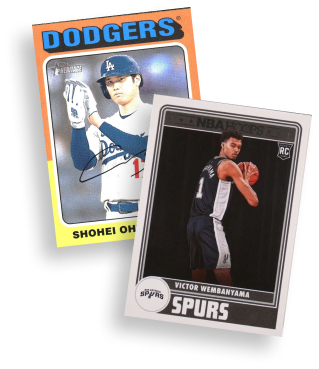10 Tips to Getting the Most Out of Your Card Show Experience
Card shows are back in full force and healthier than they’ve been since the early 1990s. Even with the prevalence of online hobby activity, box breaks, auctions and content, in-person card shows are incredibly beneficial. If you’ve never been to a show or haven’t attended one in years, here are 10 critical tips and strategies to have a terrific and beneficial card show experience.

Have a Plan
Card shows can be a lot of fun, and you can get caught up gawking at a lot of cool cards. Time can fly by quickly. But it’s best to have a specific goal. Are you primarily going to buy? Sell? Invest? Add to your personal collection?
Developing a plan will save you time and frustration. Set a budget so that you know what cards you can afford, but expect to see plenty of cards that are outside your budget. If you’re looking for cards to invest in, you can easily get caught up looking at cards you want for personal collection. Focus on your goals but spend time hunting cards you truly want. Your plan and goals will likely change depending on the season.
Pick the day and time. Larger shows typically last two to four days and often have special events such as VIP early access and trade nights. Going earlier in the schedule can give you access to a larger inventory, while you can score more deals if you go toward the end of the show since vendors want to get rid of their inventory.
Hunt for Raw Cards
One of the biggest benefits of card shows is being able to inspect raw cards in person as opposed to relying on photos online. This is especially true for vintage cards. As basketball has become more globally popular, vintage NBA and ABA cards have generated lots of focus, especially considering the 1950s and 1960s don’t have much to choose from. Supply is low and demand is high for vintage hoops.
Examine corners and edges, and look for chips and creases on the surface. Don’t be afraid to ask to inspect cards and ask about any flaws you see. Many shows today have a ton of graded cards, especially higher-end cards. But there should be plenty of raw cards to examine. Look for cards that are in good enough shape to grade, especially at larger shows that might have grading companies on site accepting submissions.
Don’t Neglect Lower-End, Large-Count Boxes
It’s fun to stare at rare high-dollar cards, but you can find some awesome cards and deals hiding in those large-count boxes. Most vendors acquire these boxes in bulk from collections, so these cards are typically priced in the $1 to $10 range. Prices can be out of date with current values if vendors didn’t have time to go through and update every card. It can take some time to flip through these cards, but it can certainly be worth it if you find great deals or cards to fill your sets and player collections.
Many of these boxes are unorganized, but boxes organized by sport, team, player or years are much easier to go through. Many vendors are willing to give discounts if you buy multiple cards. Even though these are usually lower-end, but large-count boxes can include patches and autographs.
Be Ready to Look Up Current Values
Most vendors who regularly set up at shows stay on top of current values, so expect prices to be fair but on the higher end. Have market tools and platforms, such as the Beckett Online Price Guide and eBay, ready to search on your phone. Don’t assume you know the current market values of all the cards you’re looking for, because you’ll inevitably come across cards that catch your eye or that you didn’t plan on buying.
Vendors typically set prices high expecting people to ask for discounts. So, don’t feel awkward asking for vendors to come down 10 to 20 percent on their asking price, especially if you find a few recent sales at lower prices. They’re more willing to do this if you are interested in multiple cards. Vendors don’t add tax to sales, so this saves you money and saves them from paying online seller fees.
Cash Is King
Bring plenty of cash—big and small bills. Cash is the easiest and fastest way to buy and sell. One of the most attractive things about shows is the cards are right there. It’s a fast transaction. No waiting on mail days or tracking your online order. Larger shows regularly have five-figure cash deals go down on the show floor. Most vendors also accept money transfers using platforms such as PayPal, Venmo, Cash App and Zelle. Some even have QR codes on their tables or display cases so you can easily pull up their account in a payment app. This is useful if you didn’t bring enough cash.
Buy in the Off-Season
Secondary market prices typically dip in the offseason, especially for last season’s rookie class when current cards of the new rookie class release. So, this is a great time to buy. Prices can begin to rise just before the season starts, as collectors speculate on which players will have great seasons. The negative side of shows during the basketball offseason is that selection can be lower. Still, the offseason is buying season.
Bring Cards to Trade/Sell
Even if your goal isn’t to sell, it’s always a good idea to bring hot cards with you even if you don’t want to get rid of them. You never know what you’re going to come across, and you might find cards that you want more than the cards you bring. You might also find some great deals that you can’t pass up, even if you intend to quickly profit off some cards. The point is to have some flexibility. Many vendors are open to cash-trade deals, and others are always willing to buy. You can run into other collectors willing to buy or trade. Even if you get rid of cards you love, you can always try to get other one later.
Connect with People
This is one of the most overlooked and undervalued benefits of attending card shows. Make some time to meet vendors and other collectors. Even if they don’t have what you’re looking for at the show, they may have it in their larger inventory, or they may know someone else who does have what you’re looking for. Sometimes, deals need to be completed after the show. Collect business cards and be ready to hand out your contact information.
Vendors who focus on more niche cards such as vintage typically are more knowledgeable about their focus than those who deal in all types of cards. It’s always beneficial to expand your network in the hobby, and sometimes you can make good friends. You can help each other build your collections or trade down the road.
Walk the Floor Before Making Big Purchases
This tip can have some negatives and positives. On the positive side, walking the entire show floor before making a big purchase can let you compare prices and conditions of cards. Most vendors don’t want to be undercut and are willing to match or beat a better price you find for the same card in the same grade or condition. This gives you more time to shop, because you don’t want to buy a $600 card from one vendor and find it for $500 a few tables down. Of course, a negative would be passing up a seemingly good deal that someone else snagged. So, if you find something that is an amazing deal, you might want to jump on it.
Another tip of walking the floor is to start at the back. Most shows have one point of entry for crowd control, and the tables farthest away from the entry can have the least traffic. Recurring shows typically have many of the same dealers set up in the same areas each time. Recognizing these tables and vendors can save you a lot of time if you know you’re not interested in their inventory. Larger shows can have overflow rooms, so don’t neglect these even if they are significantly smaller than the main room.
Take Pictures of Cards to Create a Want List
When walking the show floor, you’re certainly going to see a lot of cards you want to get as soon as you see them. It’s easy to forget which cards you’re interested in and what tables they are at throughout the show. Take pictures with your phone and possibly make notes of the prices and location of the cards. Once you’ve gone through the entire show, circle back to the cards you noted. Some vendors put prices on each card with stickers on the front of the card holder or slab. Others put it on the back, so you’ll have to ask for the price. Some have discount sections or boxes, so take pictures of these of you want a reminder to go back and look through the discounts.
What to Bring to a Card Show
- Cash
- Cards to Sell/Trade
- Snacks
- Backpack or Card Case
- Hobby Resource Mobile Apps
- Contact Info or Business Cards to Hand Out
- Card Want List with Estimated Values
- Map of the Show Floor for Large Shows








I have a whole lot of basketball cards(jordan) and many more cards and I’m trying to see how much they’re worth
The price guide can be accessed in the top menu of this page.
I have some of those what are they going for
1) Does Beckett still do raw card reviews? If so, how can I get those done?
2) Does Beckett offer minimum grade grading?
Info on Beckett Grading is available at beckett.com/grading.
Wow, this blog is fantastic. I love reading your articles. Keep up the good work! You realize that many individuals are searching around for this info, and you could aid them greatly.